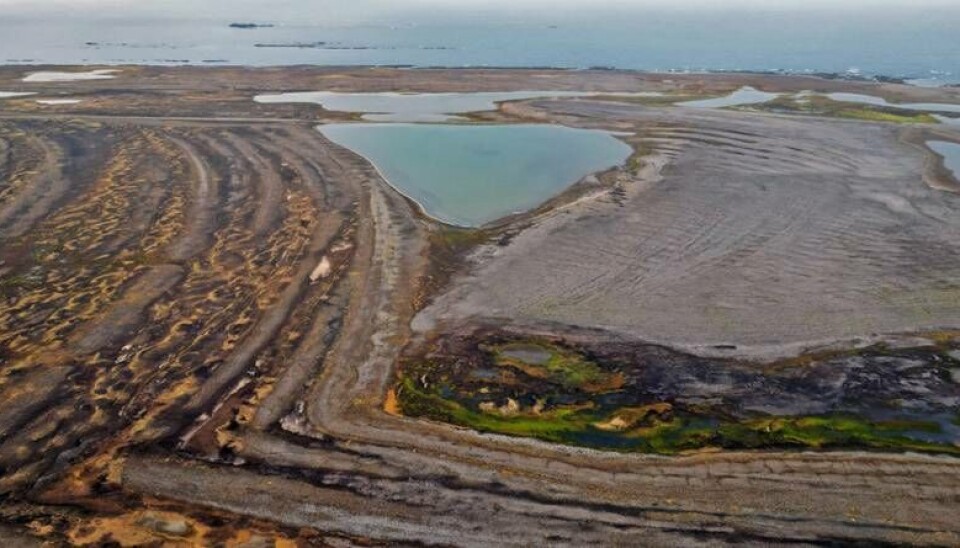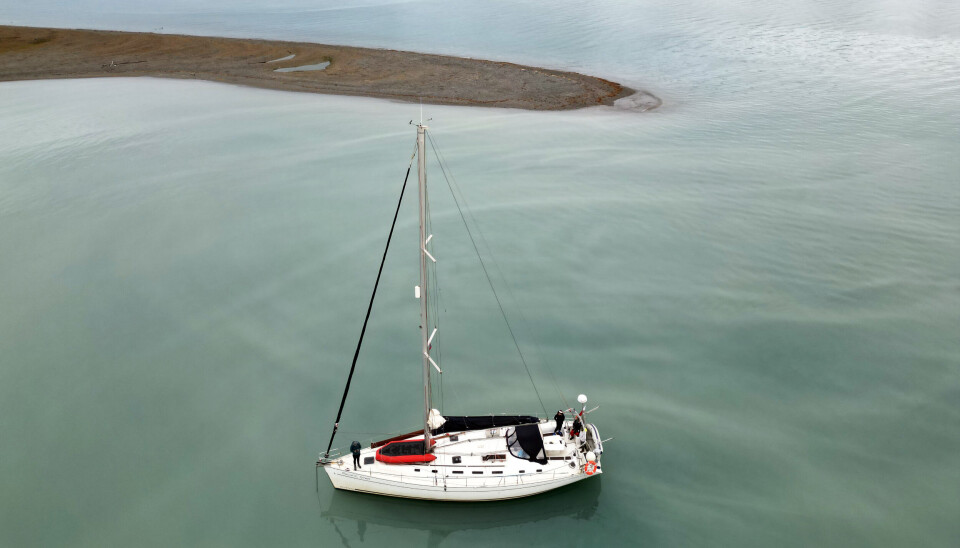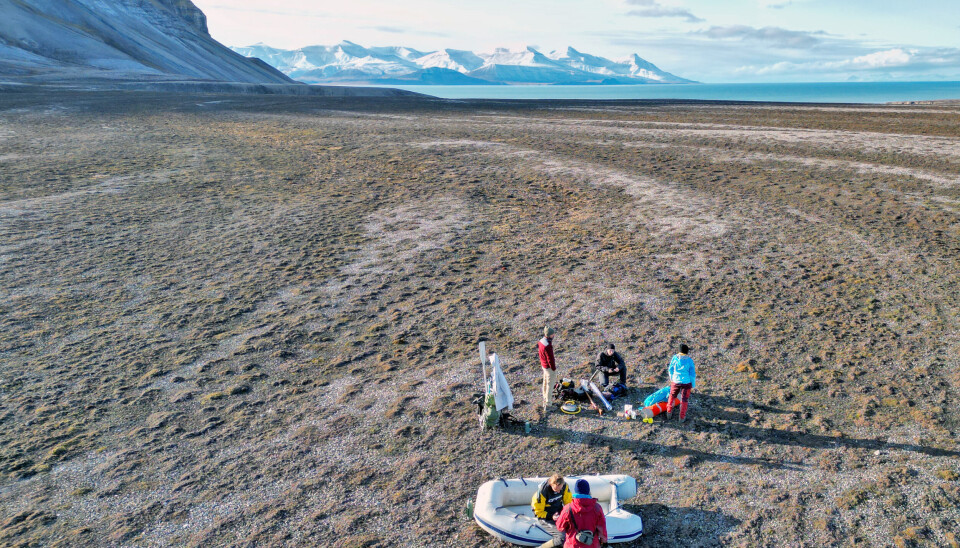THIS CONTENT IS BROUGHT TO YOU BY the University of Bergen - read more

Arctic lake archive: 10,000 years of storm data reveals a big surprise
Researcher Willem van der Bilt was surprised when a project on Arctic storminess revealed the opposite of what was expected.
A recent study has uncovered surprising patterns in Arctic storminess, challenging the common assumptions about the relationship between warming temperatures and increased wind activity.

Willem van der Bilt is a researcher at the University of Bergen and the Bjerknes Centre for Climate Research. As part of an international research team, he has developed new methods for extracting climate hazard information from geological archives like lake sediments.
Studying sediments to track storminess
To do this, the research team used detailed scanning methods and combined the results in a structured way to analyse patterns and relationships in the data.
The researchers examined sediments from a coastal lake on Svalbard, focusing on particles transported by wind and waves. These particles, which include sand grains and sea salt carried into lakes by storms, allow researchers to trace changes in wind strength and wave height over time.
Using advanced geological tools, the team refined methods typically used for studying glacier behaviour and flood frequency, adapting them to reconstruct wind history.
"We used a toolbox of techniques that are typically applied to extract other past information from geological records. And then I thought; we might as well look at the wind, right?” says van der Bilt.
Coastal carbon
Van der Bilt provides insight into the changes happening along Arctic coastlines.
The recent rapid decrease in Arctic sea-ice cover has allowed winds to whip up the sea over larger areas and for longer periods. As a result, wave heights have increased over recent decades, transferring immense energy to Arctic shorelines and accelerating coastal erosion.

In addition to this increased wave impact, Arctic coasts are becoming more vulnerable due to thawing permafrost – the icy glue that has long held Arctic coastal landscapes together.
This is a problem not only because the storm-driven collapse of Arctic shores destroys infrastructure, but also because erosion releases vast amounts of carbon from coastal permafrost deposits.
Van der Bilt notes that, although the Arctic coastlines are sparsely populated, they hold substantial carbon reserves within their permafrost. This vast carbon reservoir is increasingly being mobilised due to coastal erosion.
“And because of this, researchers have become a little bit more interested in the changing behaviour of winds and waves in the Arctic. Also, here in Norway,” he says.
Wind history
The study focused on a coastal lake on Svalbard, chosen for its ability to consistently record wind patterns over time.
The team ended up sampling cores from a few lakes shielded by a rocky ridge and started analysing these sediments. They applied a proven set of methods, making refinements, and introducing some enhancements to improve accuracy.

Van der Bilt explains that from these sediments, they extracted a clear storm signal.
“We started to understand that we could tie different signals that we recorded in these sediments to both wind systems that prevail in the area – the Westerlies and Easterlies – and get 10,000 years of wind history," he says.
Surprising patterns in Arctic storminess
As the team started to analyse their findings, the plot thickened. The results were the opposite of what the researchers thought they would be.
“The assumption is that a less icy, warm Arctic will be windier, but the sediments show us that it's the other way around. We learned that the stormy phases that we see in our record actually overlap with phases of colder climate conditions in the North Atlantic Ocean. That was a big surprise,” says van der Bilt.
Another thing they observed was a form of cyclicity in storminess.
“We find that storminess exhibits a 1,500-year cyclicity. This periodicity is a widespread feature of many North Atlantic climate records and acts like a bit of a heartbeat of the region’s climate system," he says.

Van der Bilt adds that the team found both of the region's main wind systems – the Polar Easterlies and the Westerlies – move in synchrony, weakening and strengthening together over time.
An overlooked topic
Van der Bilt believes that this is a research topic has been overlooked and hopes that their study enhances the understanding of a process that shapes our lives and the Earth’s surface – wind.
The goal is to boost the emerging field of paleotempestology – the investigation of past wind changes in strength.
Researcher Zofia Stachowska at the University of Szczecin is first author of this study. She is extremely happy with the outcome of this research.
“I'm pleased not only because it helps fill significant knowledge gaps, but also because it challenges some widely accepted assumptions about climate change. I think that this surprising pattern we show – such as colder periods being stormier – might be of high relevance. After all, this brings a twist to the narrative that a warmer Arctic will be stormier,” she says.
Real-world impact of climate research
Stachowska hopes this publication will advance the discussion on climate models, become a key reference in paleotempestology, and set a standard for similar studies.

“I am also excited about the opportunity to apply novel techniques, like high-resolution CT and XRF scanning, which revealed details that would have been invisible to the naked eye," she says.
High-resolution scanning creates detailed 3D images of sediment layers, showing their structure and composition. XRF scanning detects the chemical elements in a sample by measuring its response to X-rays, revealing types and amounts of different particles.
She adds that the clarity of the results was only possible due to the combination of multiple methods.
Stachowska hopes their study will prove relevant beyond scientific interest, emphasising its potential real-world implications. Climate change has socioeconomic impacts that affect us all.
“Svalbard is a climate-change hotspot, warming at rates far exceeding the global average, fast-forwarding into the future. Our findings highlight processes that could directly affect the future coastal stability or carbon release from coastal erosion in the Arctic,” she says.
References:
McKay et al. 'Exceeding 1.5°C global warming could trigger multiple climate tipping points', Science, vol. 377, 2022. DOI: 10.1126/science.abn7950 (Abstract)
Muilwijk et al. Future sea ice weakening amplifies wind-driven trends in surface stress and Arctic Ocean spin-up, Nature Communications, vol. 15, 2024. DOI: 10.1038/s41467-024-50874-0

This content is paid for and presented by the University of Bergen
This content is created by the University of Bergen's communication staff, who use this platform to communicate science and share results from research with the public. The University of Bergen is one of more than 80 owners of ScienceNorway.no. Read more here.
More content from the University of Bergen:
-
Researcher: Politicians fuel conflicts, but fail to quell them
-
The West influenced the Marshall Islands: "They ended up creating more inequality"
-
Banned gases reveal the age of water
-
Researchers discovered extreme hot springs under the Arctic
-
Tiny particles unlock vinegar’s hidden healing potential
-
“Why doesn't it rain more?” asks researcher




































